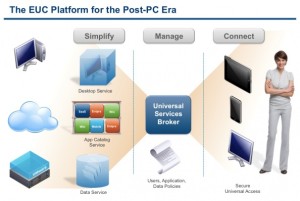The move to virtual desktops from physical is not one made on the ROI number alone. There has to be a reason a root case study that drives the decision. For many it’s the idea that man hours will be saved on patching, still others it’s the goal to standardize the enterprise. But regardless of the initial premise the question remains does it make sense and will it work for the environment.
The Assessment:
Every Virtual Desktop Infrastructure (VDI) engagement needs to have an assessment phase as the first step. Whether it’s pre or post sales it has to happen. How else will you know if making the investment for a full blown deployment even makes sense. Maybe you have 1,000 employees who all work in PhotoShop all day long, on high end workstations. Just because a slick salesperson in a nice business suit told you the benefits of VDI doesn’t mean it’s going to work for you. Those 1000 employees are not going to be happy with a VDI solution that is “affordable” you will need to spring for larger servers than you would if you only had employees who work on the web and with email all day long. The use case of standardization here doesn’t apply but maybe you don’t realize that until you have the assessment done.
What to look for in an assessment?
I like to ensure that I provide data for what machines make good candidates, and which ones don’t for virtualizing. I also like to have the justifications for both classifications, sometimes in an assessment a machine will show with High CPU utilization through out the day, which may red flag it as a bad candidate, but when you dig a little deeper all that CPU is going towards a bad install of Anti-virus. Other times you will see a user has a machine that is far under powered for the tasks they perform. Other useful information I like to provide is Disk utilization to help calculate the necessary IOPs or Disk ReadsWrites. IOPs are more crucial to a VDI than the servers that host it. Look at user data, how large are profiles, and what applications are used the most frequently. These items will help to determine what profile management method should be used, and what applications to target for virtualization. The aggregate of this data will help to determine the size and scope of any pilot, as well as what the “Golden” Image will look like.
All in all an assessment done right is worth the cost, it may just save you from betting the farm on a solution that doesn’t fit your enterprise.


